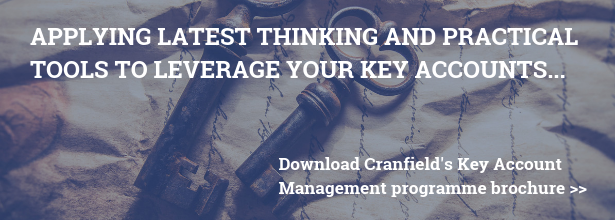/KAMBP/KAMA%20Chameleon%20Blog%20Image%2019.jpg?width=615&name=KAMA%20Chameleon%20Blog%20Image%2019.jpg)
Everyone knows the famous Culture Club song Karma Chameleon. But here we are going to introduce the KAMA Chameleon, or in our world, the Key Account Manager (KAMgr). The KAMgr job has evolved over the last 20 years into a complex and multi-faceted role which is a very different role from that of traditional sales roles. The role stretches far beyond the sales function where it has traditionally been seen as residing and encompasses the whole organization and that of the customer.
Indeed, as one Senior Manager from a global engineering company described the role:
'The people you need in these sorts of positions are light years away from traditional salespeople. All the competences are the sort of skills framework we expect for rising CEOs and managing directors’.
For example:
- KAMgrs need to manage within complex organisations, with complex customers, offering complex solutions often co-created with customers.
- KAMgrs need to be adept at dealing with and communicating with those at C-suite level down to the operational level in both their own and the customer organisation.
- KAMgrs must manage people and resources across different functions and boundaries usually over which they have no direct authority in conditions that are often filled with ambiguity.
So, they have to be a like a KAMA chameleon. Now, while there could be said to be some negative connotations about being a chameleon, it is the adaptability of the chameleon to its environment that is impressive and which KAMgrs need to emulate in their role. For example, KAMgrs need to tailor their conversations and value propositions to different audiences and understand what matters to them. They also need to be adept at putting themselves in the customer’s shoes and thinking like the customer. They have to be able to build a future strategy with the customer as well as recognising the operational implications of their decisions on internal colleagues.
So, given these challenges, what skills and competencies do great KAMgrs need? These broadly fall into the following categories:
- researching and investigating
- innovating and developing new ideas
- strategising and planning
- selling and negotiating
- communicating and coordinating
- driving operational standards
It is worth pointing out that many competences and skills can be developed through training and coaching.
One other major part of the role is leading the Key Account Team and are two distinct teams that a KAMgr may have to lead. The first is what is generally termed a cross-functional delivery team made up from all the key functions who are involved in delivering for the customer. Another KAM team that a KAMgr might need to lead is what is generally referred to as the pan-organization or pan-geography customer focused team. These occur when either the customer is highly complex with lots of touch points or the customer is being managed on a pan-geography basis.
Finally, further common questions that people ask us about the role of the KAMgr are:
- Should I recruit externally or internally into the role?
- Where should I locate my KAMgrs?
- How should I motivate and reward KAMgrs?
- What development and training should KAMgrs have?
- How long should a KAMgr stay in their position?
- What succession planning should I put in place?
- Who should manage the KAMgrs?
Want to find out the answers to some of these questions? The Role of the KAMgr and Key Account Teams is covered in more detail in the Kogan Page book “Implementing Key Account Management”. Take a look to see how this role is very different to traditional sales roles and how it is continuing to evolve.
Our work in this area is critical to achieving successful key account management programs for organisations looking to succeed at managing key account customers. For the past twenty years, Cranfield has pioneered the development of Key Account Management research in Europe. Working with world leading businesses to adopt new frameworks to fully leverage key relationships and strategies. This new frontier knowledge is continually integrated into our Key Account Management Programme
Blog produced by:
Dr. Sue Holt, visiting academic and programme director on Cranfield School of Management's Key Account Management Best Practice programme. Also facilitates on the KAM Best Practice Research Club.
Read more:
- How can you co-create value with your strategic customers?
- Creating compelling customer value propositions
- Implementing Key Account Management: To plan or not to plan
- Adopting Key Account Management – 12 Mistakes to Avoid
- Advance your career: How to go from middle weight to heavy weight in 2019


/KAMBP/KAMA%20Chameleon%20Blog%20Image%2019.jpg)

